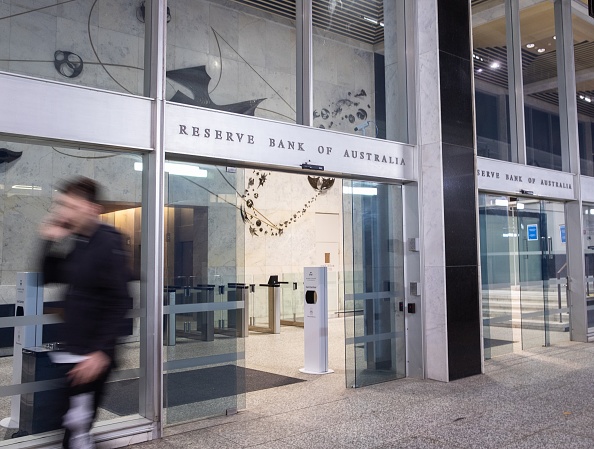Hoping for a rate cut before Christmas? Don’t hold your breath
While inflation has hit its lowest point since March 2021, the RBA is likely to exercise caution when it meets next week
Pressure is mounting on the Reserve Bank of Australia board to reduce the cash rate when it meets next week following data released by the Australian Bureau of Statistics yesterday.
ABS figures showed inflation fell by one percent to 2.8 percent in the September quarter, down from 3.8 percent in June. This places it in the RBA’s stated target range of 2 to 3 percent.
Mortgage holders will be waiting expectantly to see if the RBA board decides to cut the official interest rate from 4.35 percent as mortgage stress impacts an increasing number of Australians.
A recent survey by comparison site, Finder, revealed that up to four in 10 mortgage holders were contributing 40 percent or more of their income to repayments. Mortgage stress is considered to have kicked in once the borrower is contributing one third or more of their income.
Following RBA board meetings in recent months, Governor Michele Bullock has stressed the board’s commitment to driving down inflation. With yesterday’s inflation figures better than anticipated, expectations of a drop have risen. However, despite inflation sitting at the lowest level since March 2021, economists have cautioned that a cut before Christmas is unlikely.
“Short of substantially higher unemployment, lower underlying inflation or an external shock, the RBA is likely to remain on hold in the months ahead as the board look to sustainably return inflation to the target range,” REA Group senior economist Eleanor Creagh said.
The cautionary approach is due in part to the underlying reasons for the decline in figures, including Federal Government rebates on energy, which were a temporary measure to offset cost of living pressures.
Following the board’s last meeting in September, Ms Bullock was careful not to raise hopes of an interest rate cut before next year.
“If tomorrow we get an inflation number with a two in front of it, so it’s back in the band, that doesn’t mean that we’ve got inflation under control,” she said.
In recent months, the United States and Canada have both cut their cash rates by half a percentage point, prompting calls to do similar in Australia.
Records keep falling in 2025 as harbourfront, beachfront and blue-chip estates crowd the top of the market.
A divide has opened in the tech job market between those with artificial-intelligence skills and everyone else.
JPMorgan Chase has a ‘strong bias’ against adding staff, while Walmart is keeping its head count flat. Major employers are in a new, ultra lean era.
It’s the corporate gamble of the moment: Can you run a company, increasing sales and juicing profits, without adding people?
American employers are increasingly making the calculation that they can keep the size of their teams flat—or shrink through layoffs—without harming their businesses.
Part of that thinking is the belief that artificial intelligence will be used to pick up some of the slack and automate more processes. Companies are also hesitant to make any moves in an economy many still describe as uncertain.
JPMorgan Chase’s chief financial officer told investors recently that the bank now has a “very strong bias against having the reflective response” to hire more people for any given need. Aerospace and defense company RTX boasted last week that its sales rose even without adding employees.
Goldman Sachs , meanwhile, sent a memo to staffers this month saying the firm “will constrain head count growth through the end of the year” and reduce roles that could be more efficient with AI. Walmart , the nation’s largest private employer, also said it plans to keep its head count roughly flat over the next three years, even as its sales grow.
“If people are getting more productive, you don’t need to hire more people,” Brian Chesky , Airbnb’s chief executive, said in an interview. “I see a lot of companies pre-emptively holding the line, forecasting and hoping that they can have smaller workforces.”
Airbnb employs around 7,000 people, and Chesky says he doesn’t expect that number to grow much over the next year. With the help of AI, he said he hopes that “the team we already have can get considerably more work done.”
Many companies seem intent on embracing a new, ultralean model of staffing, one where more roles are kept unfilled and hiring is treated as a last resort. At Intuit , every time a job comes open, managers are pushed to justify why they need to backfill it, said Sandeep Aujla , the company’s chief financial officer. The new rigor around hiring helps combat corporate bloat.
“That typical behavior that settles in—and we’re all guilty of it—is, historically, if someone leaves, if Jane Doe leaves, I’ve got to backfill Jane,” Aujla said in an interview. Now, when someone quits, the company asks: “Is there an opportunity for us to rethink how we staff?”
Intuit has chosen not to replace certain roles in its finance, legal and customer-support functions, he said. In its last fiscal year, the company’s revenue rose 16% even as its head count stayed flat, and it is planning only modest hiring in the current year.
The desire to avoid hiring or filling jobs reflects a growing push among executives to see a return on their AI spending. On earnings calls, mentions of ROI and AI investments are increasing, according to an analysis by AlphaSense, reflecting heightened interest from analysts and investors that companies make good on the millions they are pouring into AI.
Many executives hope that software coding assistants and armies of digital agents will keep improving—even if the current results still at times leave something to be desired.
The widespread caution in hiring now is frustrating job seekers and leading many employees within organizations to feel stuck in place, unable to ascend or take on new roles, workers and bosses say.
Inside many large companies, HR chiefs also say it is becoming increasingly difficult to predict just how many employees will be needed as technology takes on more of the work.
Some employers seem to think that fewer employees will actually improve operations.
Meta Platforms this past week said it is cutting 600 jobs in its AI division, a move some leaders hailed as a way to cut down on bureaucracy.
“By reducing the size of our team, fewer conversations will be required to make a decision, and each person will be more load-bearing and have more scope and impact,” Alexandr Wang , Meta’s chief AI officer, wrote in a memo to staff seen by The Wall Street Journal.
Though layoffs haven’t been widespread through the economy, some companies are making cuts. Target on Thursday said it would cut about 1,000 corporate employees, and close another 800 open positions, totaling around 8% of its corporate workforce. Michael Fiddelke , Target’s incoming CEO, said in a memo sent to staff that too “many layers and overlapping work have slowed decisions, making it harder to bring ideas to life.”
A range of other employers, from the electric-truck maker Rivian to cable and broadband provider Charter Communications , have announced their own staff cuts in recent weeks, too.
Operating with fewer people can still pose risks for companies by straining existing staffers or hurting efforts to develop future leaders, executives and economists say. “It’s a bit of a double-edged sword,” said Matthew Martin , senior U.S. economist at Oxford Economics. “You want to keep your head count costs down now—but you also have to have an eye on the future.”
From mud baths to herbal massages, Fiji’s heat rituals turned one winter escape into a soul-deep reset.
Australia’s market is on the move again, and not always where you’d expect. We’ve found the surprise suburbs where prices are climbing fastest.



















